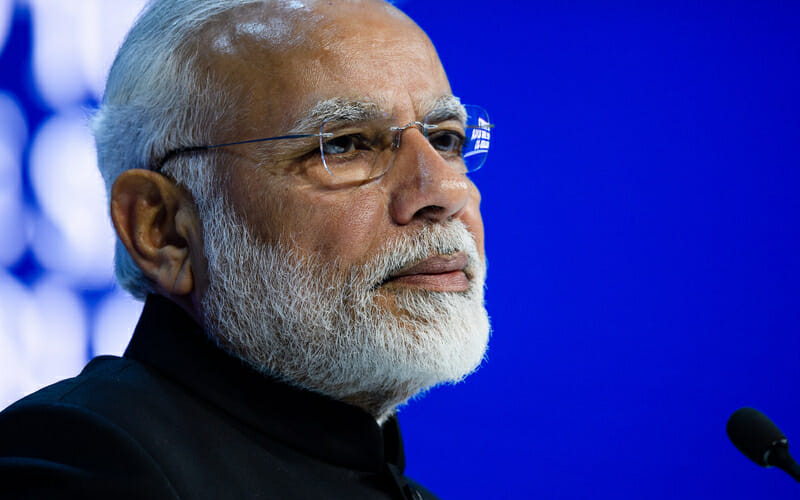
India’s Act East Policy is Progressing but with a Hangover
At a Global Investors’ Summit held in Guwahati in the Indian state of Assam on February 3, 2018 Prime Minister Narendra Modi described India’s Northeast region as at the heart of the Act East Policy. The prime minister also further stated that the tagline of the summit – Advantage Assam: India’s gateway to ASEAN (Association of Southeast Asian Nations) – outlines India’s vision with respect to India’s Northeast region.
This summit was preceded by a series of diplomatic engagements on different forums between India and the ASEAN countries in the past few months. The year 2017 marked completion of 25 years of India-ASEAN dialogue partnership. The 15th Annual ASEAN-India Summit was held in November 2017 in Manila, Philippines. In December 2017, the ASEAN-India Connectivity Summit was held in New Delhi. The ASEAN-India Pravasi Bharatiya Divas (Indian Diaspora Day) was celebrated in Singapore on 6-7 January 2018. On 26th January 2018, which is India’s Republic Day the heads of states or governments of all the ASEAN member countries were the chief guests for the Republic Day parade.
India’s focused engagement with Southeast Asia started in 1992 with the launch of the ‘Look East Policy.’ This policy has resulted in deeper economic co-operation between India and the ASEAN countries. In 2014 this policy was reframed as the ‘Act East Policy’ with the aim to continue economic engagement but at the same time strengthen strategic partnership with the region.
The rising influence of China in Southeast Asia and the Indian Ocean Region and the direct geopolitical challenge it poses to India requires the latter to pursue a strategically active foreign policy. The Act East Policy has been one such attempt in this direction. And while there is progress to a certain extent, the strategic thinking and policy formulation still present a glimpse of the past hangover.
For a major part of the post-independence period, ‘continental mindset’ had dominated Indian strategic thinking. Border disputes and wars with Pakistan and China have been the major factors that have contributed to this thinking. Continuing cross border terrorism only contributes to maximum attention being directed towards the land border. But this has also resulted in maritime dimension receiving minimal attention.
The influence of continental mindset is evident in India-Southeast Asia relations. Currently two projects are underway to improve connectivity between India and Southeast Asia. One is the India-Myanmar-Thailand Trilateral Highway, running from Moreh in Manipur state in Northeast India to Mae Sot in Thailand passing through Myanmar, and the other is Kaladan Multi-Modal Transit Transport Project. The trilateral highway is also expected to be further extended to Laos and Cambodia. The Kaladan project will connect Indian’s state of Mizoram (again in Northeast India) with the rest of India as well as with Southeast Asia. This project is a combination of shipping, inland water and road ways. Both these connectivity projects are expected to increase trade between India and Southeast Asia as well as facilitate easy movement of people.
The Act East Policy focuses mainly on the Northeast region. Apart from the prime minister’s statement that the Northeast region is at the heart of the Act, Indian policymakers have always considered the Northeast region as India’s gateway to Southeast Asia. Another region which is located in close proximity to Southeast Asia, Andaman and Nicobar Islands, has received relatively lesser importance. This reflects the influence of continental thinking rather than maritime awareness in strategy formation.
Andaman and Nicobar Islands are located in the Bay of Bengal about 1300 km from mainland India in the southeastern direction. Geographically these islands are closer to four Southeast Asian countries than mainland India. The distances between Andaman and Nicobar Islands and Indonesia, Thailand, Myanmar and Malaysia are 215 km, 510 km, 672 km and 735 km respectively.
Andaman and Nicobar Islands have a Tri-Service Command (Army, Navy and Air Force). The purpose of this command is protection of India’s strategic interests in the region. Currently there have been plans to strengthen this command by building facilities for harbouring warships and aircraft carriers. But it is important to speed up this process of capacity building. Andaman and Nicobar Islands could also be developed as a gateway to Southeast Asia. But that step is yet to be taken by the government. Land connectivity through the Northeast region still remains the primary choice for a gateway.
Rules-based order in the South China Sea and ensuring freedom of navigation in the Malacca Straits and Indian Ocean is crucial to India’s strategic interests. Andaman and Nicobar Islands are ideally located to forward India’s interests on different maritime fronts. There is greater need for maritime domain awareness in India’s strategic thinking.
India’s centuries old cultural ties with Southeast Asia have provided a strong base for building strong relations. India is the fourth largest trading partner of ASEAN. But India needs to deepen its strategic ties in the region. Southeast Asian countries also favour India’s increased involvement to counter China’s expansionist policies in the region.
At the time when a maritime strategy would increasing play a decisive role in India’s strategic outreach, navy’s share in India’s defence budget is not only low but has been decreasing for the past few years. Comparison of the budget share allocation for the year 2018-19 with 2010-11 shows that budget allocation to the navy has come down from 18% of total defence budget to 15%. At the same time the budget share of the army has increased from 50% to 55%.
India’s relations with Southeast Asia are progressing simultaneously with India looking to strengthen the strategic arm of its foreign policy. But there is still a hangover of continental thinking. India must focus more on the maritime domain to be able to flex its muscle in the region.
